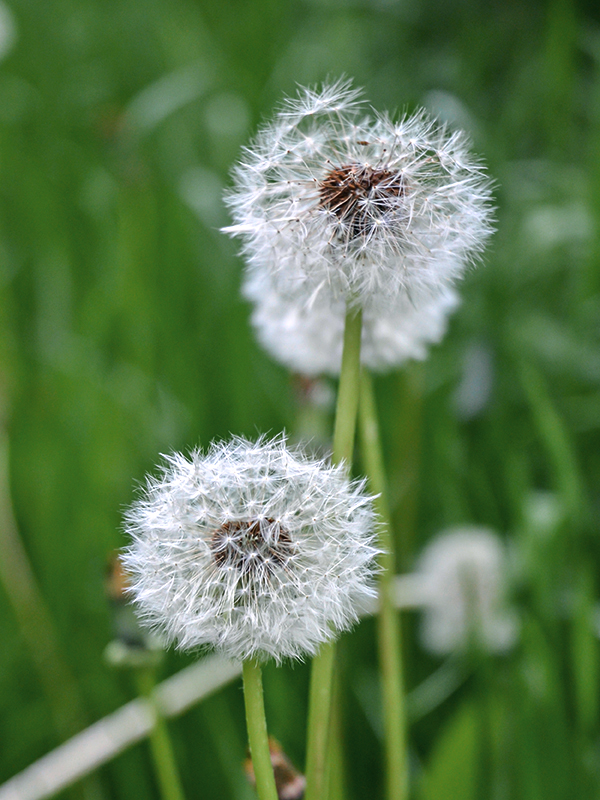
Perennials, Weeds > Taraxacum > Taraxacum officinale > Taraxacum officinale
Taraxacum officinale
Common Dandelion, Blowball
Origin: Native to Eurasia. The genus name is derived through the medieval Latin word 'tarasacon' and the Arabic word 'tarakhshagog' from 'talkh chakok', Persian for bitter herb. The common name 'Dandelion' comes from 'dent de lion', French for lion's teeth, in reference to the sharply serrate leaves.
| Family |
| Asteraceae |
| Genus |
| Taraxacum |
| Species |
| officinale |
| Category |
| Perennials, Weeds |
| USDA Hardiness Zone |
| 3 - 10 |
| Canadian Hardiness Zone |
| 1a - 8a |
| RHS Hardiness Zone |
| H2 - H7 |
| Temperature (°C) |
| -40 - 4 |
| Temperature (°F) |
| -40 - 40 |
| Height |
| 15 - 30 cm |
| Spread |
| 15 - 30 cm |
Photographs
Description and Growing Information
Flowering Period
| General Description |
| Taraxicum officinale or Common Dandelion is a perennial with hollow stems containing milky sap, deeply toothed leaves, bright yellow ray florets and a deep taproot. |
| Cultivation |
| Extremely well-adapted and will grow in most soil conditions, in full sun. A widely distributed perennial weed, occasionally intentionally grown for its leaves used as a salad green. Flower heads should be removed to prevent re-seeding. Leaf flavour can be improved by keeping plants away from light by earthing up or covering with inverted pots. Plants will go dormant over winter. Varieties cultivated for consumption mainly native to Eurasia. |
| Growth |
| Fast |
| Pests |
| Very robust, usually free from pests and diseases. |
| Leaf Description |
| Alternate, green, 5 - 40 cm, margins serrate with basally pointing teeth, arranged in a basal rosette. An edible, bitter green often used in salads. |
| Flower Description |
| Solitary, bright yellow, ligulate, made up of many smaller florets, petals very narrow with toothed tips. Heads close at night and form a spherical puffball of seeds when mature. Each seed is attached to a tuft of hairs (called a pappus) that assists dispersal by the wind. |
| Notable Specimens |
| Joany’s Woods, West Williams, Middlesex County, Ontario, Canada. |
| Propagation |
| By seed sown in spring. Final spacing of established plants should be 35 ⨉ 35 cm. Also from root cuttings which may be potted and forced to grow in the dark (see Cultivation). |
| Ethnobotanical Uses (Disclaimer) |
| Roots, leaves, buds and flowers are all edible: roasted roots are a caffeine-free coffee substitute, young leaves are used in salads, flower heads to make wine. Roots are diuretic and a mild laxative. |
